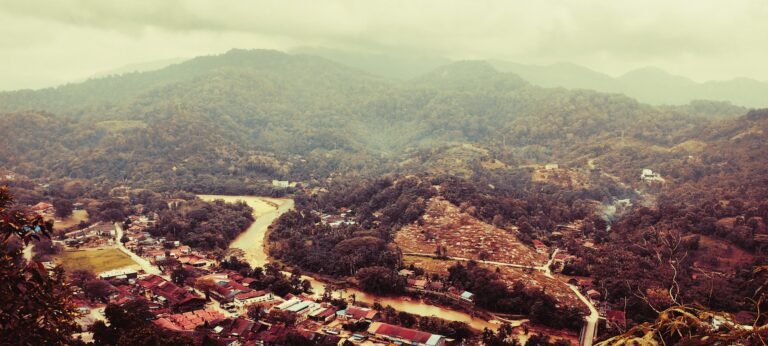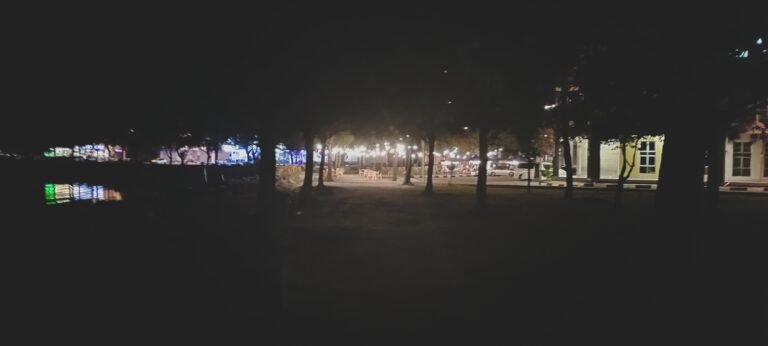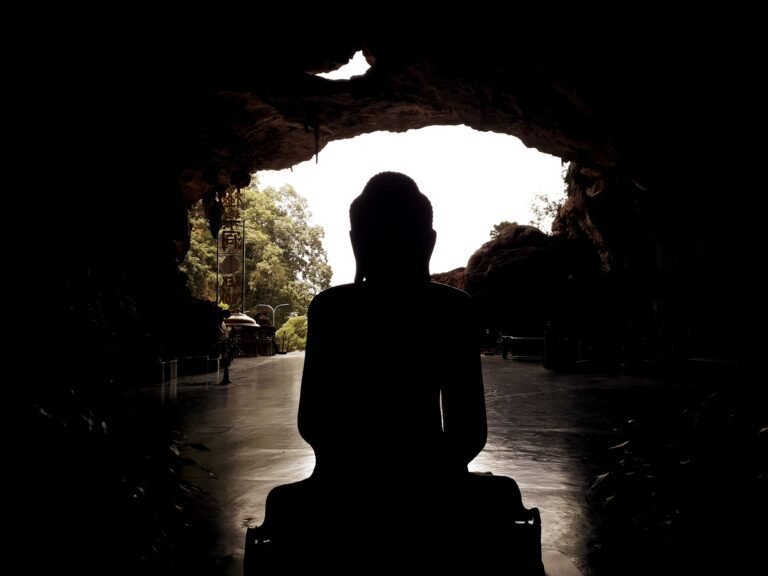Ensconced amongst towering white cliffs on Malaysia’s western peninsula, Ipoh is a town characterised by its colonial past and former standing as a mining hotspot of some repute. At its heart lies Qing Xin Ling.
Ipoh is a handsome, rugged place. There, jagged limestone karsts jut out of the earth as though jabbed by some subterranean elemental force. Pocketed within these peaks are intricate temples and traditional centres that seem to intensify the magnificence of their surroundings.
One such site is Qing Xin Ling Leisure and Cultural Village. The site enjoys a calm setting. It intrudes in and around the karsts, which creates a preternatural stillness. An apt link, given that Qing Xin Ling translates as ‘serene hills’ from the original Mandarin.
The village enshrines a lake which acts as an emerald-hued, peaceful centrepiece announced by a series of pandok summerhouses. But the most striking view, at least initially, is the banyan wish tree. Here, visitors record innumerable pledges and yearnings on red ribbons and drape them across its branches, set companionably beside a statue of Caishen, the Chinese god of fortune.
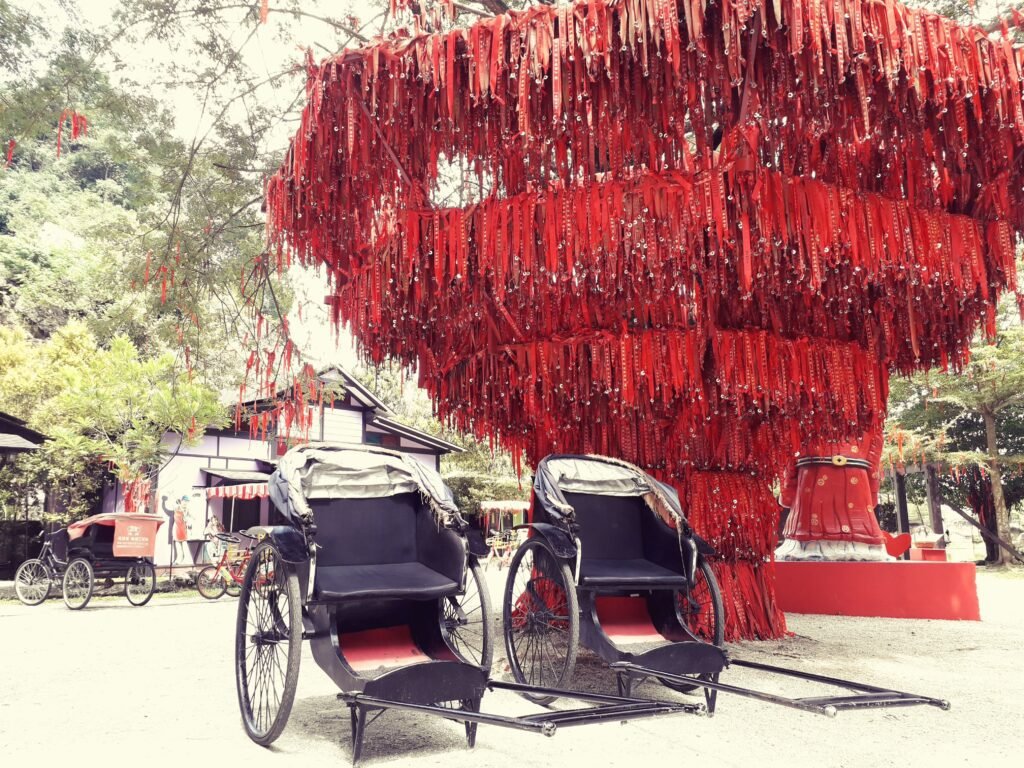
Nostalgic feel
And from there, the centre opens up. A fine filament of dust follows in the wake of bicycles and traditional Chinese rickshaws as they trundle past a facsimile village. The feeling conveys a sense of sepia yearning. One may see the homes and shops of yore, replete with nostalgic memorabilia. Black and white photos, radios, TV sets, a jukebox and an ice shaver add further glimpses into the past.
A turn around the lake casts continues this backwards glance. The shell of an antique car resides within eyeshot of a boat installation. Both things, despite their seeming incongruity, sit in perfect stillness amongst the surrounding jungle. Here in Qing Xin Ling, nature and culture blend seamlessly together in a way that brings to mind the dreamlike gardens of El Explorador in Boquete, Panama.
And thus does the trawl through history continue. A winding narrow passageway, Memory Lane, stabs into the limestone cliffs. The attendant windmills and reenactments of street stalls, completed by authentic props including Malay vinyl, barbershop gear and a coffee grinder, render an indelible image of life as it once was.
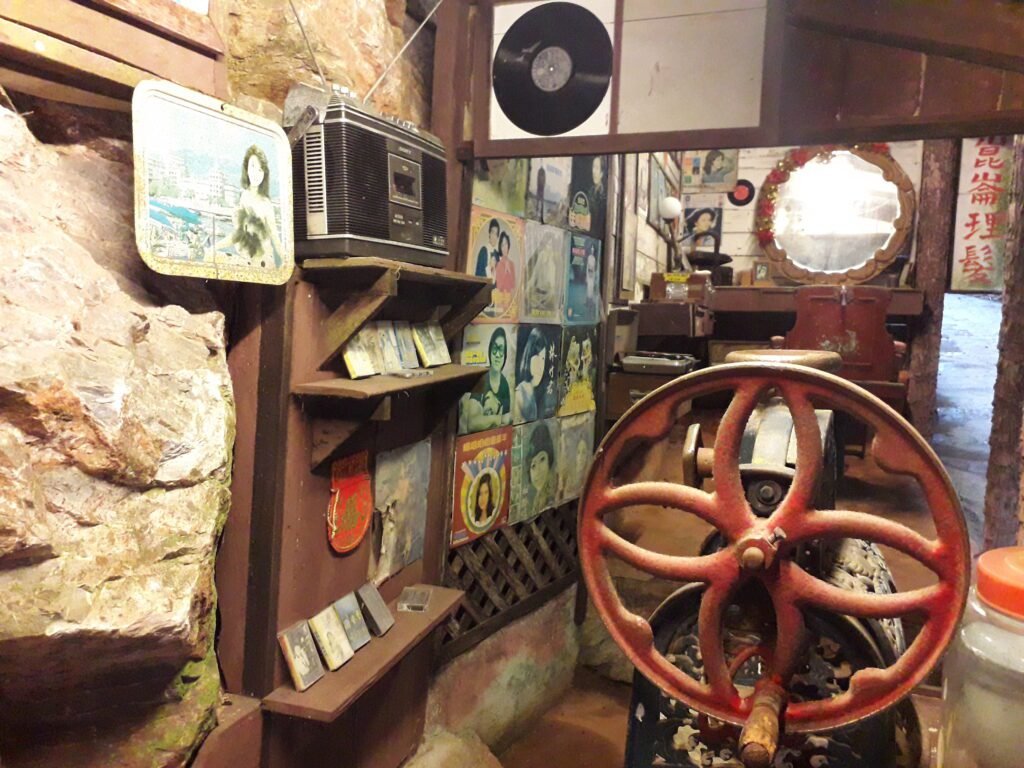
Discover more from Eye in the Middle
Subscribe to get the latest posts sent to your email.

